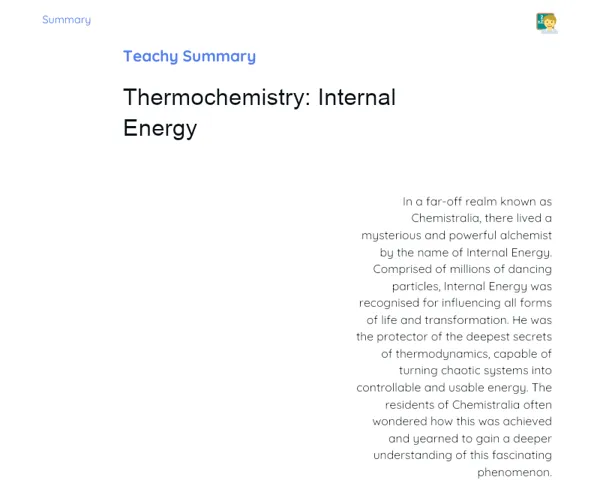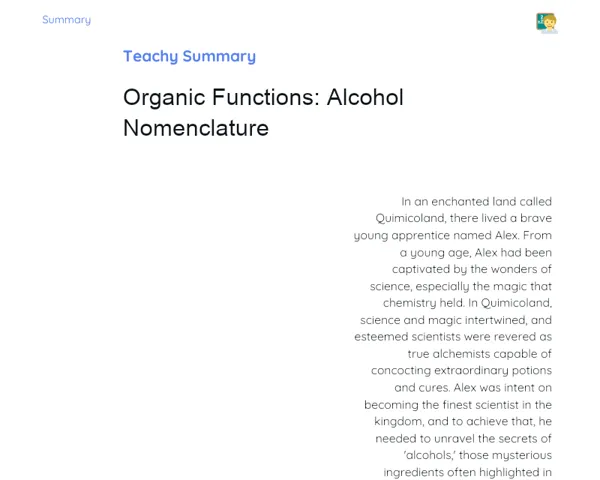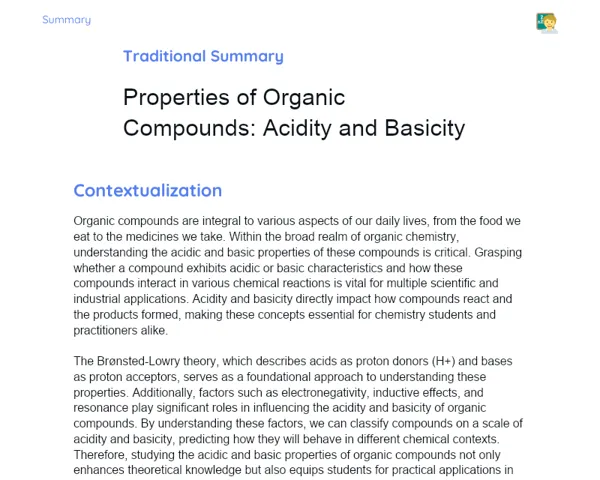Goals
1. Understand the concept of activation energy and its significance in chemical reactions.
2. Utilise the Arrhenius equation to calculate activation energy.
3. Examine how temperature impacts reaction rates.
Contextualization
Chemical kinetics is the field of chemistry that delves into the speed of chemical reactions and the factors that influence them. One key factor is activation energy, which is the minimum energy required for a reaction to take place. Think of it like boiling water for cooking pasta; you need to provide a certain amount of heat for it to reach boiling point. Similarly, chemical reactions need that initial energy to kick off. Grasping the concept of activation energy is vital, as it finds applications in everything from developing medications to industrial manufacturing.
Subject Relevance
To Remember!
Activation Energy
Activation energy refers to the minimum energy that reactant molecules must possess for a chemical reaction to occur. It acts like a hurdle that needs to be cleared for reactants to change into products.
-
It’s essential for initiating a chemical reaction.
-
It can be lowered through the use of catalysts.
-
Temperature can affect reaction rates, either speeding them up or slowing them down.
Arrhenius Equation
The Arrhenius equation connects the rate constant of a chemical reaction with temperature and activation energy. It serves as a key tool for calculating reaction rates and understanding how temperature affects the speed of chemical reactions.
-
The formula is k = A * e^(-Ea/RT), where k is the rate constant, A is the frequency factor, Ea is the activation energy, R is the gas constant, and T is the temperature in Kelvin.
-
This equation helps predict how the rate of a reaction will change with variations in temperature.
-
It’s extensively used in kinetic research and industrial applications.
Influence of Temperature
Temperature plays a critical role in chemical kinetics as it directly impacts the reaction rate. When the temperature rises, it generally increases the energy available to reactant molecules, making it easier to overcome the activation energy barrier.
-
Raising the temperature typically speeds up the reaction rate.
-
Temperature affects the kinetic energy of molecules, increasing both the frequency of collisions and their energy levels.
-
In some reactions, exceedingly high temperatures can destabilise reactants or products, rendering the reaction impractical.
Practical Applications
-
Pharmaceutical Production: Managing the speed of reactions during the synthesis of drugs is crucial for ensuring the effectiveness and safety of medications.
-
Chemical Industry: Catalysts are employed to reduce activation energy, enhancing production efficiency and saving both time and energy.
-
Environmental Processes: In water and wastewater treatment, a solid understanding of chemical kinetics is vital for optimising purification and pollutant breakdown reactions.
Key Terms
-
Chemical Kinetics: The study of the speed of chemical reactions and the factors that influence them.
-
Activation Energy: The minimum energy required for a chemical reaction to take place.
-
Arrhenius Equation: A mathematical relationship that connects the rate constant of a reaction with temperature and activation energy.
-
Catalyst: A substance that lowers the activation energy of a reaction, speeding it up without being consumed in the process.
-
Temperature: A measurement of thermal energy that influences reaction rates.
Questions for Reflections
-
How does understanding activation energy aid in enhancing industrial processes?
-
What role do catalysts play in the chemical industry and drug production?
-
In what ways does temperature influence chemical reactions in biological and environmental contexts?
Practical Challenge: Controlling Activation Energy
This mini-challenge is designed to reinforce understanding of how temperature and catalysts impact activation energy and reaction rates.
Instructions
-
Form groups of 3 to 4 students.
-
Select a simple chemical reaction (like the reaction between vinegar and baking soda).
-
Conduct the reaction at varying temperatures (using hot and cold water) and note any differences in reaction speed.
-
If possible, introduce a catalyst to see how it changes activation energy and reaction rate (for example, add the enzyme catalase to the hydrogen peroxide decomposition reaction).
-
Document your observations and discuss the results with your group, focusing on how temperature and the catalyst affect activation energy and reaction rate.



